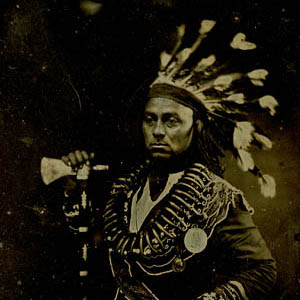Gender
Puerto Rican Labor Movement: Official Document, Sterilization
Thirty years after Mrs. Roosevelt visited the island of Puerto Rico, working women were still subject to exploitation in the industrial setting—in particular, to coerced sterilization.
Dona Marina, Cortes' Translator: Letter, Hernán Cortés
This excerpt from Cortés’s Second Letter, written to Charles V in 1519 and first published in 1522, is one of only two instances in Cortés’s letters to the King that explicitly mentions his indigenous translator.

A PreColumbian Portfolio: An Archive of Photographs
Each database record includes a caption, a brief (about 20-word) description, and information on the culture associated with the artifact, such as Maya, Olmec, or Zapotec.
Maya Vase Database: An Archive of Rollout Photographs
The vases include scenes of palace life, mythology, warfare, and animals.
Framing Canada: A Photographic Memory
The images, dating from 1843 to the mid-20th century, come from government, commercial, and private sources.
Great Unsolved Mysteries in Canadian History
Students may begin by focusing on 'solving' the crime itself, but along the way will be drawn into the consideration of wider issuesThe Book of Rites, Early Education and Gender Differentiation
In early China, aristocratic boys are said to have studied the Asix arts. Specifically, this referred to ritual, archery, charioteering, music, writing, and mathematics, all skills associated with government, warfare, and religious and court ritual.
U.S. Supreme Court Decision Justifying Gender-Based Age of Consent Laws
The Supreme Court is the final court of appeal in the American legal system, with the power to determine whether laws enacted by state and federal legislators comply with the American constitution.
Islamic Empire: Official Document, Jewish Marriage Contract
Within the context of patriarchal societies, women are dependent upon their male relatives to look out for their best interests.
Islamic Empire: Poem, Abbasid-era
The Abbasid period is known as a time during which women’s public roles became more restricted in the Muslim population (umma).